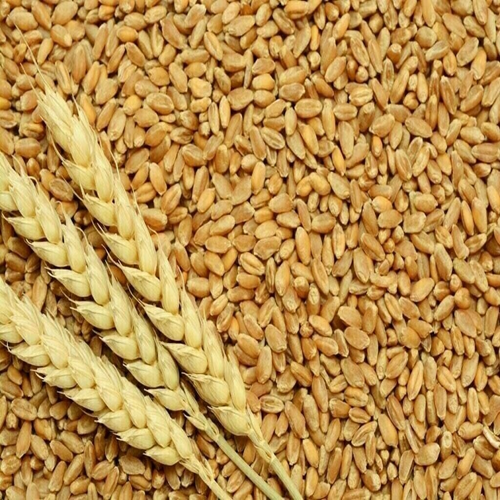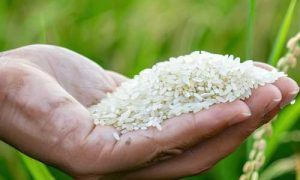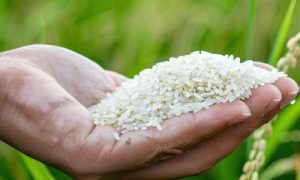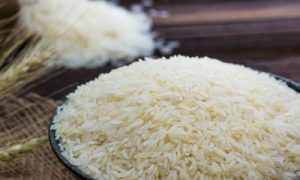Rising temperaturesthreaten India’s wheatproduction

NEW DELHI: Facing a third consecutive year of declining wheat production due to heat stress, India re-imposed stock limits on wheat to curb hoarding and stabilize prices. This measure follows a 60% procurement shortfall in the 2022-23 season. Government wheat stocks hit a 16-year low, prompting India to import 115,000 tonnes since June 2023. The National Mission for Sustainable Agriculture aims to counter climate impacts, but experts highlight the need for increased fiscal support to avert a production crisis.
Decline in wheat production over the past two seasons because of rising temperatures has reduced domestic availability.
India is facing a third year of falling wheat production.
The culprit? Heat.
Yields of the country’s second most important food staple have declined significantly in the past two years.
In 2022, excessive temperatures in March hit wheat production, lowering output by almost 4 million tonnes below the government’s forecast of 110 million tonnes.
Studies show that the impact of “heat stress” was more evident in key wheat growing states of north India where wheat productivity declined significantly during the 2021-22 rabi or winter planting season (sowing in mid-November and harvesting in April-May).
In Punjab, for instance, the decline was 13.5 percent compared to the previous year. Scientists have estimated that for every 1 degree Celsius increase in temperature wheat production reduces by 4-5 million tonnes.
Worryingly, the adverse effect of “heat stress” is threatening to reverse the substantial improvements in wheat production India experienced between 2014-15 and 2020-21 when output increased from 86 million tonnes to 110 million tonnes.
Production target missed
In 2023, the official target for wheat output of 113 million tonnes was again down by almost 3 million tonnes. This year, the government expects wheat output to be 110 million tonnes again, but the actual level will not be known for several months.
However, these figures are disputed by the main industry body, the Roller Flour Millers’ Federation of India.
It says wheat output levels were lower than those projected by the government by at least 10-14 percent. This year, the federation expects wheat production to be around 105 million tonnes, 8 percent lower than government projections, although this would be about 3 percent higher than the federation’s estimates of the previous year’s output.
Lending credence to the estimates of the industry was the consistently lower-than-expected level of wheat procurement by the government.
During the 2022-23 rabi marketing season, procurement by government agencies was 18.7 million tonnes as against the government target of 44.4 million tonnes, a 60 percent shortfall.
The following year, the government set a considerably lower procurement target of 34.2 million tonnes, but actual procurement was 26.1 million tonnes, almost a quarter lower.
Given the experiences of the past two rabi marketing seasons, the government lowered the wheat procurement target for the current season further to 30-32 million tonnes. However, as in the past two seasons, actual procurement is expected to remain below the target.
Latest estimates indicate that wheat procurement would be marginally higher than that of the previous year.
The decline in production over the past two seasons has reduced domestic availability of wheat, thus jeopardising the government’s targets on two fronts.
First, by lowering publicly held stocks, namely buffer stocks, critical for providing subsidised food grains to the poor as well as for conducting open market operations necessary for keeping domestic wheat prices in check.
Secondly, lower output has affected the government’s aspirations for transforming India into an agriculture export hub.
Export ban
These aspirations were fuelled during 2021-22, when India emerged as one of the major exporters of wheat, exporting a record level of over 7.2 million tonnes of the commodity.
But with wheat output declining in 2022 after increasing continuously for six years, between 2015-16 and 2020-21, the government banned wheat exports in order to “manage the overall food security of the country and control the increasing prices of foodgrains”
However, even while imposing the export ban, the government decided to “continue with deals which are done directly with other governments” resulting in export of more than 4.6 million tonnes during 2022-23.
But with wheat production declining during the year, continued wheat exports made its impact felt on the domestic food reserves.
Buffer stock of wheat maintained by the Food Corporation of India (FCI), had dropped to 29.9 million tonnes on June 1, 2024, almost 4.7 percent lower than the 31.4 million tonnes a year ago.
The current buffer stock level is at a 16-year low, slightly higher than the previous lowest wheat stock that was at 24.1 million tonnes on June 1, 2008.
Though the government claims that the existing level of buffer stock was adequate for meeting any exigencies, there are indications that it is less certain than it professes.
Imports increase
That supply constraints have become an area of concern from the government stems from the fact that India has begun importing substantial quantities of wheat, the first time since 2017-18.
Imports began in June 2023 and have increased consistently since. Until April this year, total imports have been almost 115,000 tonnes. There is no doubt that India would find it difficult to enhance the production of wheat given the significant challenges posed by consistent increase in temperatures in the immediate pre-harvest phase.
Faced with similar imperatives to ramp up wheat production in the mid-1960s, the then government had adopted the green revolution with strong research support that allowed the realisation of the objective of food self-sufficiency.
The National Mission for Sustainable Agriculture (NMSA) is expected to play a similar role having been tasked with the responsibility of transforming Indian agriculture into an ecologically sustainable climate resilient production system.
In addition, National Innovations in Climate Resilient Agriculture aims at “strategic research on adaptation and mitigation, demonstration of technologies on farmers’ fields and creating awareness among farmers and other stakeholders to minimise the climatic change impacts on agriculture”.
However, fiscal support for agricultural research has remained inadequate as increases in budgetary allocations have often not been increased in real terms, which shows a lack of political commitment in this vital area.
This situation needs to change quickly to prevent a catastrophic decline in wheat production.
Biswajit Dhar is Distinguished Professor, Council for Social Development, New Delhi.
On Monday, the Government of India decided to impose stock limits on Wheat applicable to Traders/Wholesaler, Retailers, Big Chain Retailers and Processors for all States and Union Territories in order to manage the overall food security and to prevent hoarding and unscrupulous speculation.
The Removal of Licensing Requirements, Stock Limits and Movement Restrictions on Specified Foodstuffs (Amendment) Order, 2024 has been issued with immediate effect from today i.e. 24th June 2024 and will be applicable until 31st March 2025 for all States and Union Territories, stated the Ministry of Consumer Affairs, Food & Public Distribution.
Source Link : https://nagalandtribune.in/rising-temperatures-threaten-indias-wheat-production/

















